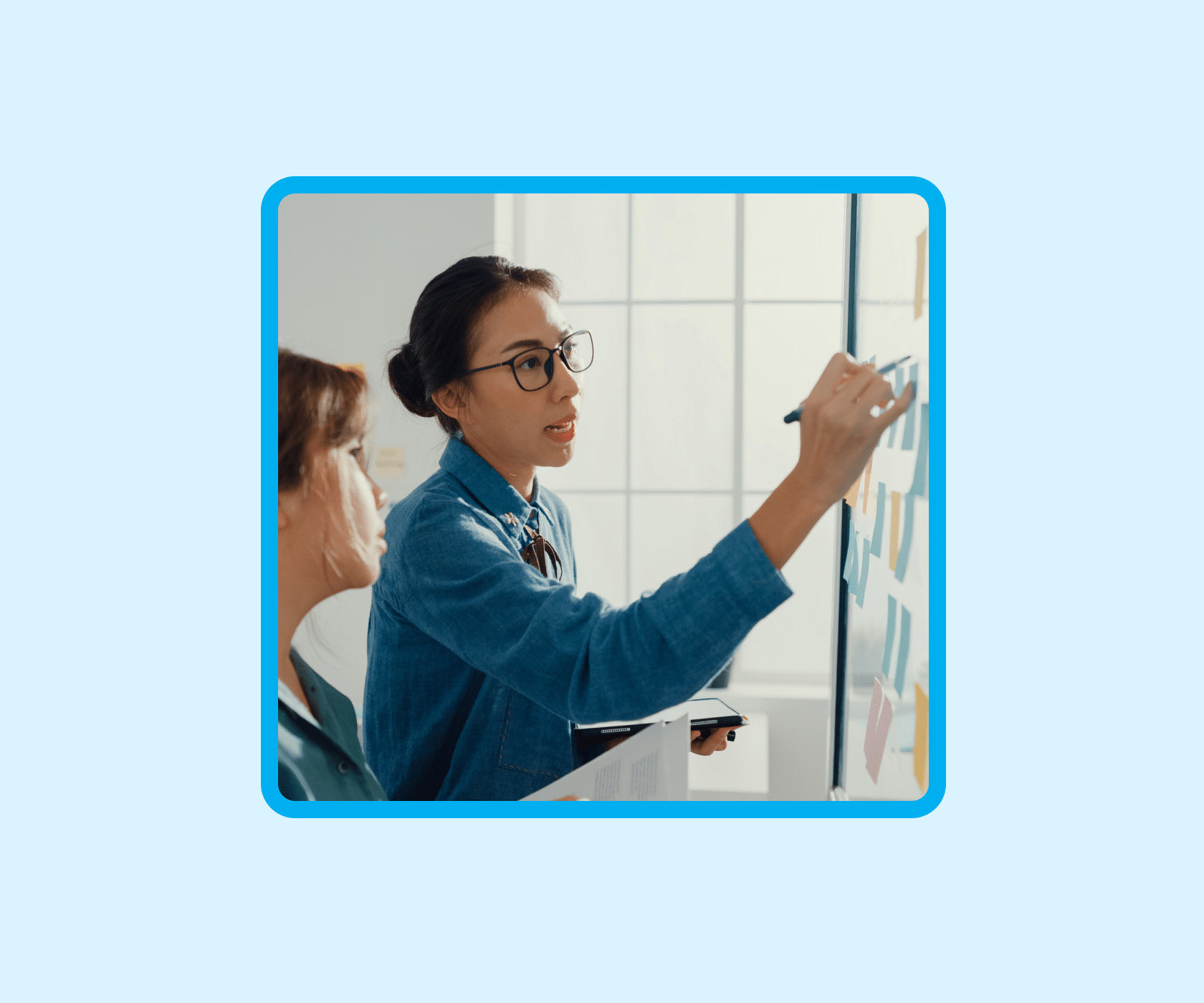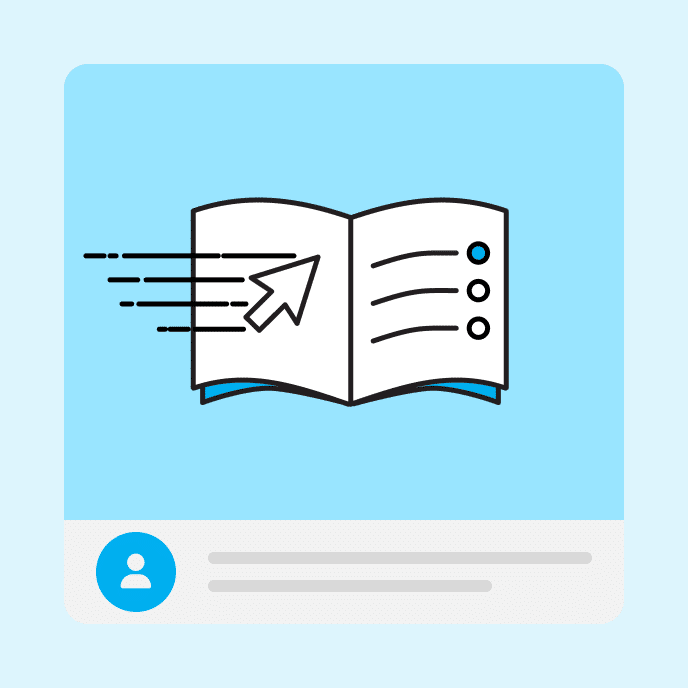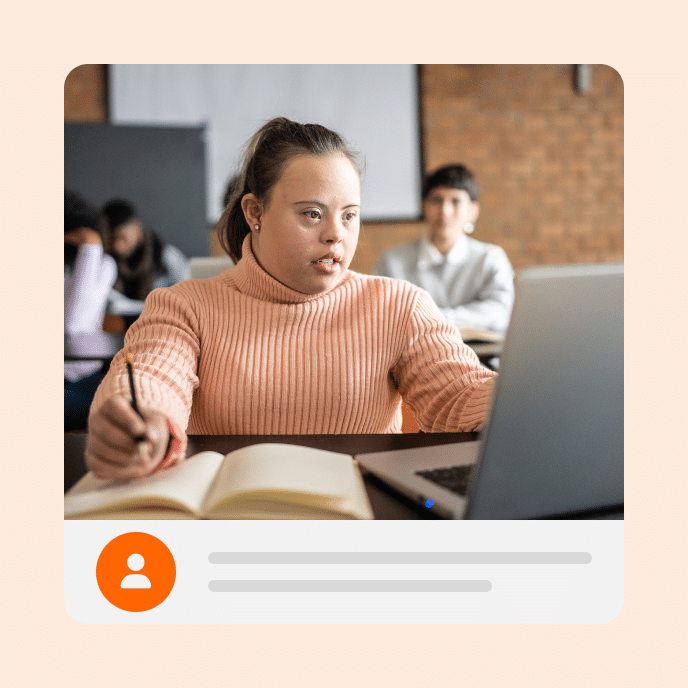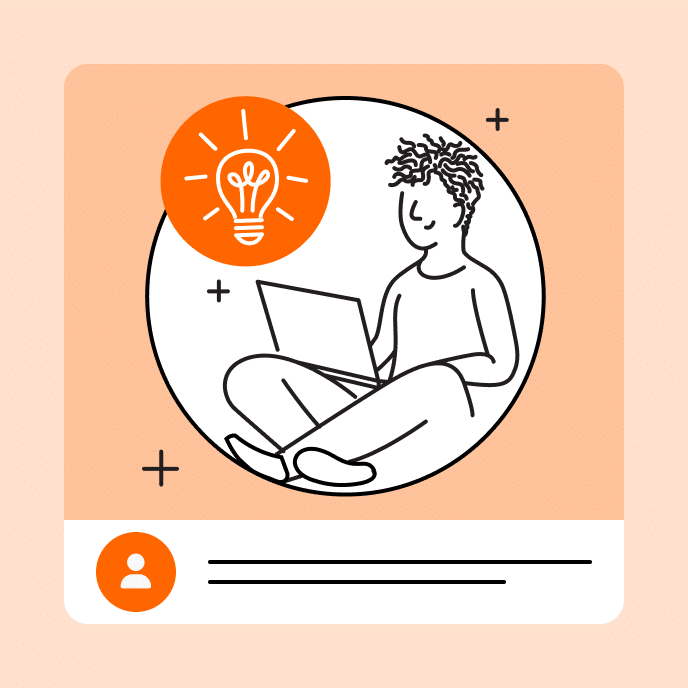3 Key Principles for Better E-Learning Design
Learn how to create more effective e-learning by focusing on meaningful content, connecting to the bigger learning picture, and making intentional design choices.

How to design e-learning that actually helps people learn
When you’re building e-learning courses, the difference between “just okay” and “really effective” comes down to how well you design the learning process. Remember, creating effective e-learning isn’t just about sharing information – it’s about designing experiences that help people learn and grow.
In this post, we’ll explore three fundamental principles that will help you move beyond basic content delivery to create courses that drive real understanding and practical application.
Focus on meaning, not just information
Here’s a common trap: We often think that learning equals information sharing. You might be tempted to pack your course with facts and figures, but that’s only part of the story. What really matters is how learners make sense of that information.
Think about it this way: If you’re watching a movie, you don’t just want raw footage where you have to figure out what it all means. Instead, you want a story that pulls everything together.
The same goes for learning. Your job isn’t to dump information on learners; it’s to help them understand why it matters and how to use it.
Pro Tip: When you’re working with subject matter experts, they’ll often push for more information. Your role is to help them see that effective learning isn’t about quantity – it’s about making the content meaningful and usable.
Remember: your course is part of a bigger picture
Learning doesn’t happen in a vacuum. Your e-learning course is just one piece of a much larger puzzle. Here’s why this matters:
- Learners are always in “learning mode” – they’re constantly picking up new information from their environment, conversations, and experiences
- Your 30-minute course fits into this broader ecosystem of learning
- People will naturally connect your course content with what they already know and do
This means you need to think beyond just your course. Consider how your content connects to learners’ everyday work and existing knowledge. The more you can help them make these connections, the more effective your training will be.
Be intentional with your design
As the course designer, you’re in charge of everything that appears on screen. This is a big responsibility – each element you include (or leave out) affects how well people learn. Random or poorly organized content creates confusion. And confused learners aren’t learning effectively.
Think about how elements work together to create meaning. A single piece of content – whether it’s text, an image, or a video – rarely tells the whole story. But when you thoughtfully combine elements, you help learners grasp concepts more quickly. It’s like the difference between throwing puzzle pieces on a table versus helping someone see how they fit together.
Sure, sometimes you want learners to figure things out on their own. That can be valuable for certain types of learning. But most of the time, your job is to clear the path to understanding, not create obstacles.
Your role is to be the bridge between content and comprehension. Ask yourself:
- What’s the clearest way to present this information?
- How do these pieces work together to support learning?
- What might confuse learners, and how can I prevent that?
- How does this connect to what learners already know?
The goal isn’t just to share information—it’s to help people learn. Every design choice you make should support that goal. When you’re intentional about your design decisions, you create learning experiences that stick.
Putting it all together: action steps
When designing your next course, ask yourself:
Meaning check:
- How is this information relevant to my learners?
- What context do they need to make sense of it?
- How can they apply this in their work?
Ecosystem awareness:
- What do my learners already know about this topic?
- How does this fit with their existing workflow?
- What support might they need beyond the course?
Design decisions:
- Is every element on my screen serving a clear purpose?
- Have I created clear relationships between different pieces of information?
- Am I using the right mix of text, images, and multimedia?
Transform your e-learning design by focusing on what matters
Just because you build an e-learning course doesn’t automatically mean learning happens. By focusing on meaningful content, connecting to the broader learning ecosystem, and making intentional design choices, you can create e-learning that truly impacts your learners.
You may also like

Build Interactive Scenarios With The Simple 3C Framework
Create engaging scenarios with proven building blocks I’ve written extensively about the 3C model over the years since introducing it on the Rapid E-Learning blog in 2009. So this content isn’t exactly new, but now seems like a perfect time to revisit this framework because it continues to offer tremendous value for today’s instructional designers. […]

